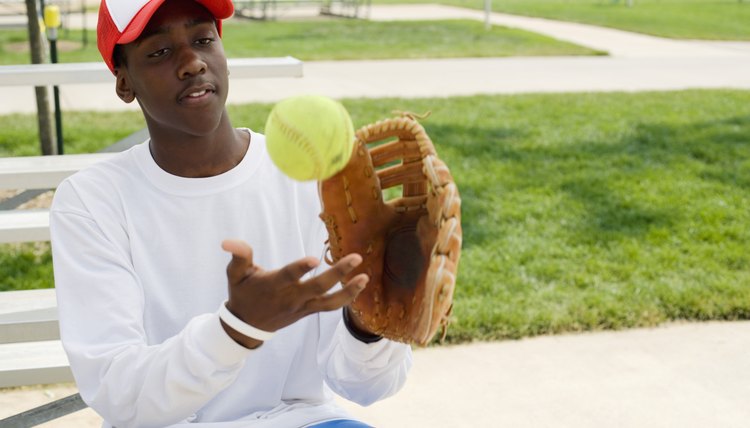Newton's Laws of Motion & Softball

Newton's laws of motion help to describe all motion in the world. Understanding these laws often is made easier by relating them to a familiar concept, like softball. If you play softball, consider the forces acting on the ball, the bat, your glove and anything else involved in the game.
Newton's First Law
According to Newton's first law, an object at rest will stay at rest and an object in motion will stay in motion at the same speed and going the same direction until acted upon by some outside force. Newton's first law is evidenced constantly in softball, when you pick up a stationary ball and throw it, changing its motion with force, or when a ball is hit by the bat, changing the ball's direction initially dictated by the throw from the pitcher.
Newton's Second Law: Definition
Newton's second law of motion helps to describe the motion of an object when it is acted upon by an outside force. The second law states that an object's change in motion is equal to the sum of the forces acting upon it. At any time, there are several forces acting on a softball. The pitcher's arm pushes and forces the ball forward, gravity pulls the ball toward the earth, air resistance pushes against the ball as it moves through the air and the ball's spin during a pitch creates a lifting force. All of these forces go into describing a ball's motion.
Newton's Second Law: Example
A good example of Newton's second law is in the high arc of a slow softball pitch. When the ball leaves the pitcher's hand, the greatest force acting on it is the player, pushing and throwing the ball into the air. As soon as the ball is airborne, it comes under other constant forces that gradually overcome the initial force of the player's arm. Air resistance slows the ball down and gravity begins to pull the ball towards the earth. The transfer of these forces onto the ball results in the arcing motion of a slow pitch ball. When the ball reaches the bat, the force of the bat becomes the largest force and dictates the ball's new motion, out into the field.
Newton's Third Law
Newton's third law states that for every action there is an equal and opposite reaction. One example of Newton's third law is when you catch a ball. As the ball enters your mitt and contacts the leather, it stops. In that instant, your hand exhibits a force equal to that which the ball imparts on the glove. The force you exhibit is equal and opposite to the motion of the ball. The result is that the ball stops.
References
Writer Bio
Patrick Hutchison has been doing freelance work since 2008. He has worked as a physical therapy aide and as a writer for various websites including Destination Guides and several travel-related companies. Hutchison has a Bachelor of Arts in history and anthropology from the University of Washington.
